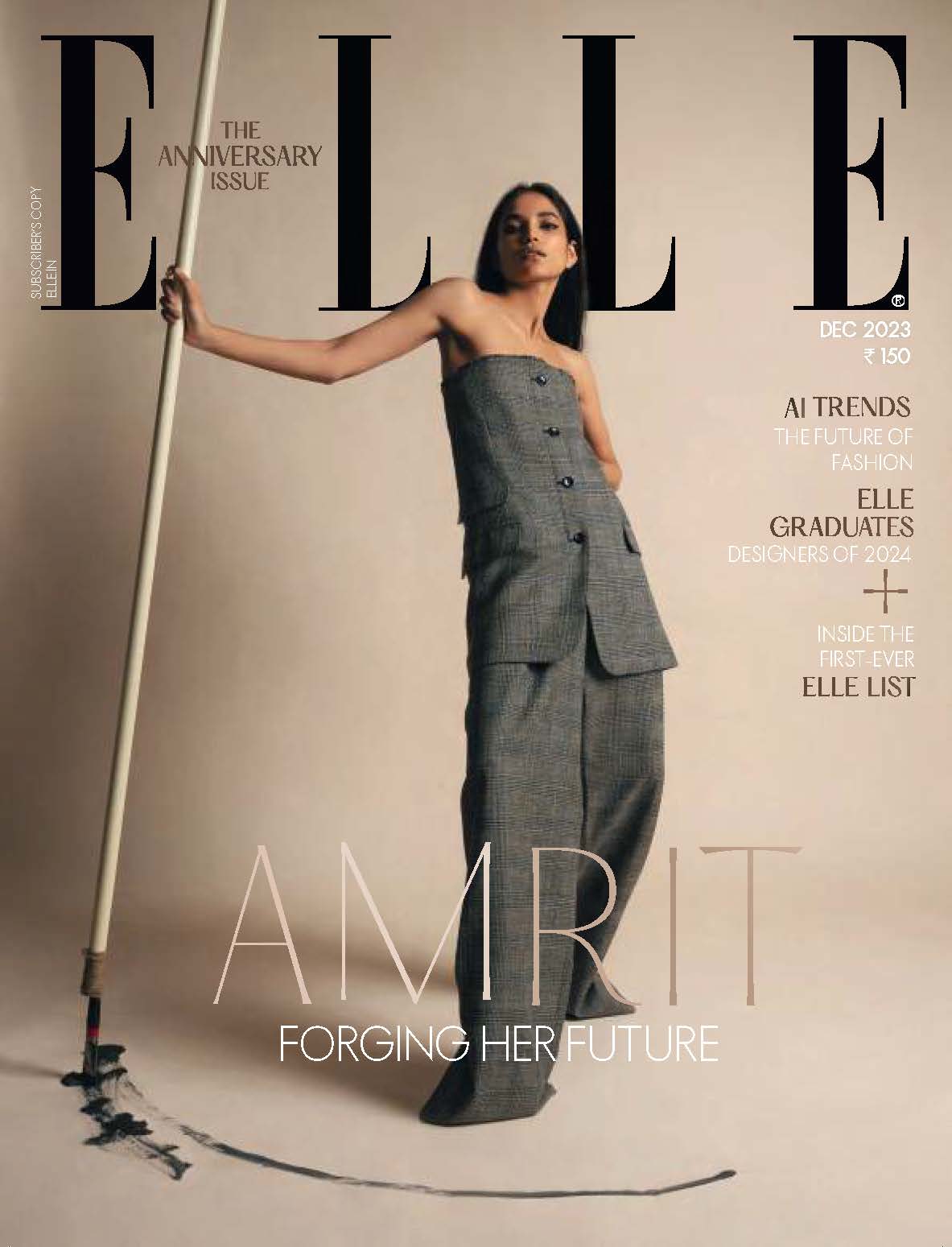Designers the world over are making a slow but steady shift towards sustainable fashion, but does the average consumer know what eco-friendly fashion really is? Sitanshi Talati-Parikh investigates.
The sobering 2017 documentary RiverBlue follows international river conservationist Mark Angelo as he brings into focus how some of the world’s key rivers are being destroyed by the mass manufacturing of clothing. Angelo asserts that any major global fashion brand uses approximately 28 trillion gallons of fresh water every year. And that hazardous chemicals like mercury, cadmium and lead from the fabric are polluting rivers that supply drinking water dyes that filter into them. These chemicals do not break down, and travel around the world destroying aquatic life and causing damage to humans in the form of cancer and sensory loss.
As consumers, we tend to chase beauty over benefits: if it looks good, it couldn’t have harmed anything on its way. There are no aubergine-hued pollutants in the rivers, no underage children making those sensational ruffles, and no worker was paid inadequately to sew those pastel sequins on. Are we wrong, ignorant or simply apathetic? Perhaps all of the above. The True Cost, a film on the fashion industry, brings to the forefront the materialism that drives the economy of fashion, and the heavy price that is paid for cost-effective fast fashion. Parallelly, brands are voraciously driving new trends, while discounting the previous season’s styles. How many pairs of jeans is enough, when baggy or cropped is in one month, and skinny or bootleg fit next month’s #goals? “The consumer didn’t wake up one morning, saying, ‘I want to buy five pairs of jeans.’ We were literally introduced to this concept by the fashion industry,” a commentator in RiverBlue says.
It is clear then, that of the many things it is — expressive, cathartic, good for the economy, and great for Instagram — fashion is also dangerous to the planet. Thankfully, and finally the industry is now paying heed to its potential legacy of environmental destruction. At Lakmé Fashion Week Summer/Resort (LFW S/R) 2018, Rajesh Pratap Singh used Tencel, a soft fabric made by Austrian textile group Lenzing. It is made from the plant cellulose of sustainably harvested trees in a ‘closed-loop’ production sequence that recycles almost 100 per cent of the solvent. Mumbai-based designer Anavila Misra (of Anavila) has made linen, created from fibres of the flax plant, shine in her subtle-hued saris. Guwahati’s Nandini Baruva (of Kirameki) uses sustainable fabric, made from banana and pineapple (pina fabric), and Eri silk (also known as Ahimsa silk) in her designs that are laced with an ethnic touch. Globally, eco-warrior designer Stella McCartney’s Falabella Go backpack, going strong since 2017, is created using recycled polyester fabric made from ocean plastic. VivoBarefoot’s shoes are made using algae biomass — each pair helps recirculate 57 gallons of filtered water back into natural habitats.

Photographs: Imaxtree.com/2018
While high-street giants like H&M are exhorting you to ‘Rewear, Reuse, Recycle’, Kriti Tula, founder of upcycling relaxed fashion label Doodlage, is keen on waste-management: “Upcycling is the ethos of our brand. Each garment is created using industrial scrap, defective and end-of-the-line fabrics, which are all part of pre-consumer waste, and often end up in a landfill.”
Seven years ago, LFW began a dialogue on sustainable fashion and now dedicates a day to it each season, which focuses on grass-roots-level artisans and craftsmen, with enthusiastic participation from the country’s established and upcoming designers alike. Last season’s #RestartFashion show saw post-consumer waste-fabric makers team up with brands like Chola and Doodlage, while Craftmark by the All India Artisans And Craftworkers Welfare Association collaborated with designers like Anshu Arora, Hetal Shrivastav and Sonal Chitranshi, to showcase ethical garments that were handwoven without generating any waste.
Yvon Chouinard, founder of the outdoor gear label Patagonia, reminds his customers in The Usual, a New York-based publication with a focus on culture and the outdoors: “Think twice before you buy a product from us. Do you really need it or are you just bored, and want to buy something?” This echoes designer Santanu Das’s philosophy for his sustainable Kolkata-based brand, Maku. “Fashion is an industry, it responds to consumption patterns. You don’t need to go on a buying spree — even if the product is sustainable or organic.” Maku’s calls to action are the organic indigo dye and natural fabrics (that are essential to the brand) — its LFW S/R 2018 collection, In Transit, glorified indigo on khadi — and to limit the products on offer.
While fashion players are galvanising into action, consumers can and should do their part too. Gautam Vazirani, fashion curator, IMG Reliance, stresses on individual responsibility. “We are constantly trying to find the next cheapest sale, and we are not conscious about how much we really need,” he says. “In India, we are blessed with easily accessible sustainable fashion. For instance, a consumer can buy a sari made by a craftsman like Chaman Premji from Bhujodi village in Kutch that is handwoven with organic cotton and naturally dyed. Such fashion keeps the environment safe, and empowers the smallest producers in rural areas.” Today, with the rise of seasonless runways and unisex products and attire, we can make a difference by focusing on learning more about and investing in eco-friendly products and fabrics, and buying fewer but value-driven classics that will endure through time and trends.
Perhaps we should shop for a greener wardrobe, because really, it is about making sustainable fashion fashionable. And that begins at home, so that our heirlooms aren’t merely Chanel and Dior, but a habitable existence on earth. As Das points out, “Fashion cannot save the planet, you can.”


